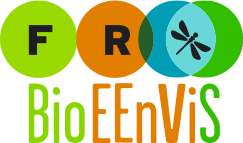Proteogenomic reconstruction of organ-specific metabolic networks in an environmental sentinel species, the amphipod Gammarus fossarum
Résumé
Metabolic pathways are affected by the impacts of environmental contaminants underlying a large variability of toxic effects across different species. However, the systematic reconstruction of metabolic pathways remains limited in environmental sentinel species due to the lack of available genomic data in many taxa of animal diversity. In this study we used a multi-omics approach to reconstruct the most comprehensive map of metabolic pathways for a crustacean model in biomonitoring, the amphipod Gammarus fossarum in order to improve the knowledge of the metabolism of this sentinel species.
We revisited the assembly of RNA-seq data by de novo approaches to reduce RNA contaminants and transcript redundancy. We also acquired extensive mass spectrometry shotgun proteomic data on several organs from a reference population of G. fossarum males and females to identify organ-specific metabolic profiles. The G. fossarum metabolic pathway reconstruction (available through the metabolic database GamfoCyc) was performed by adapting the genomic tool CycADS and we identified 377 pathways representing 7630 annotated enzymes, 2610 enzymatic reactions and the expression of 858 enzymes was experimentally validated by proteomics. To our knowledge, our analysis provides for the first time a systematic metabolic pathway reconstruction and the proteome profiles of these pathways at the organ level in this sentinel species. As an example, we show an elevated abundance in enzymes involved in ATP biosynthesis and fatty acid beta-oxidation indicative of the high-energy requirement of the gills, or the key anabolic and detoxification role of the hepatopancreatic caeca, as exemplified by the specific expression of the retinoid biosynthetic pathways and glutathione synthesis.
In conclusion, the multi-omics data integration performed in this study provides new resources to investigate metabolic processes in crustacean amphipods and their role in mediating the effects of environmental contaminant exposures in sentinel species. Synopsis: This study provide the first evidence that it is possible to combine multiple omics data to exhaustively describe the metabolic network of a model species in ecotoxicology, Gammarus fossarum, for which a reference genome is not yet available.
| Origine | Fichiers produits par l'(les) auteur(s) |
|---|
